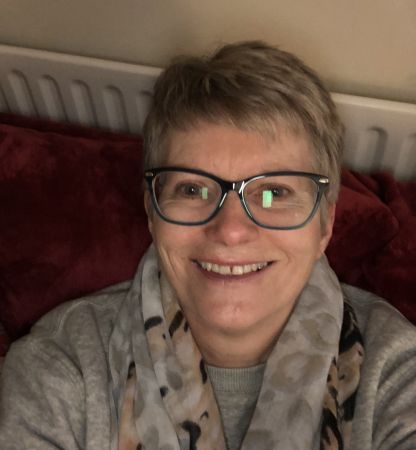
Meet the Therapist: Sally Klinkenborg
Sally Klinkenborg is a therapist in Tring and online
What attracted you to become a therapist?
I was always interested in counselling, and working as a nurse there was an element of this in my work. I experienced a bereavement back in 1999 and was helped and supported through this process by a counsellor and thought that I would like to be able to do the same for other people.
Where did you train?
I trained originally with Rusland College in 2004. I then did some further training with Chrysalis in 2014.
Can you tell us about the type of therapy you practise?
I believe that all therapists should have person-centred therapy as their foundation, as I do. I like to work integratively and favour transactional analysis, cognitive behaviour therapy and logotherapy.
How does integrative therapy work?
Integrative therapy means that I can have a choice of therapies that I feel would be most helpful to the client, and opt for those that the client responds well to and is willing to try.
When dealing with anxiety, for example, transactional analysis can help to identify how our social transactions are affected by our ego state, and CBT can provide the practical tools to manage our anxiety.
What sort of people do you usually see?
I work with all ages from 16 upwards. Anxiety and depression are common issues, plus bereavement. Loss and change are common themes.
I have also been working with couples since 2015 where issues can often revolve around communication. The pandemic has affected many people because of the social isolation and loss of loved ones. Adapting to the changes has been very challenging for many people. I have also been supporting frontline workers.
What do you like about being a therapist?
I absolutely love my work. It is a great privilege to help people make the changes they want into a reality. It is very much a two-way process, as I learn from my clients as much as I hope they can learn from me.
Working in private practice gives me the freedom to decide about caseload and working hours, which I enjoy.
What is less pleasant?
Clients occasionally disappear and that was very difficult to manage at the beginning. I have now learnt to manage the not knowing, partly with the help of a very good supervisor.
How long you’ve been with welldoing.org and what you think of us?
I have only just joined welldoing.org, as I felt I needed a change of organisation. I am very impressed so far with the attention to detail and I love the idea of matching clients to particular therapists. I am grateful for the support by admin staff that has been offered to me so far. I am looking forward to working with clients provided by welldoing.org!
Do you ever suggest books or apps to clients?
I often teach aspects of Buddhist philosophy, such as meditation, to clients and I would thoroughly recommend How to See Yourself As You Really Are by the Dalai Lama, Find Inner Peace by Mike George and Mindfulness: A Practical Guide to Finding Peace in a Frantic World by Mark Williams and Danny Penman.
Logotherapy is a therapy that focusses on us finding meaning in our suffering, without becoming bitter and stuck with any trauma and I would highly recommend Man’s Search For Meaning by Viktor E. Frankl.
Reading poetry and listening to music can also be very helpful.
What you do for your own mental health?
I first discovered yoga around 40 years ago when I was looking for something to relax me as a nurse, and I have been practising ever since. This is done daily each morning, as well as a daily walk in nature. Learning about Buddhism has also been very helpful to my mental health, particularly the practices of self-compassion and acceptance.
You are a therapist in Herts, Bucks and Beds. What can you share with us about seeing clients in those areas?
There is a mixed demographic in these three counties. There are some really rural areas, including areas of outstanding natural beauty, as well as some big towns. There is more diversity as regards culture now and I would welcome more of this.
What’s your consultation room like?
A client recently described my therapy room as ‘an oasis of calm’, which is exactly what I was trying to achieve and so I was very happy about that. I have a comfortable and supportive armchair for the client to sit on, there are some peaceful paintings on the wall and I use scented candles. The colours of green and magnolia help to create a calm atmosphere.
What do you wish people knew about therapy?
Therapy can be a very powerful tool to enable the change that you desire to become a reality in your life.
What did you learn about yourself in therapy?
I learnt to accept and value myself, to acknowledge my strengths and skills, whilst also acknowledging that I am not perfect. I can decide what needs to be worked on in myself and how to do that. Basically, I have a much better self-relationship now.














